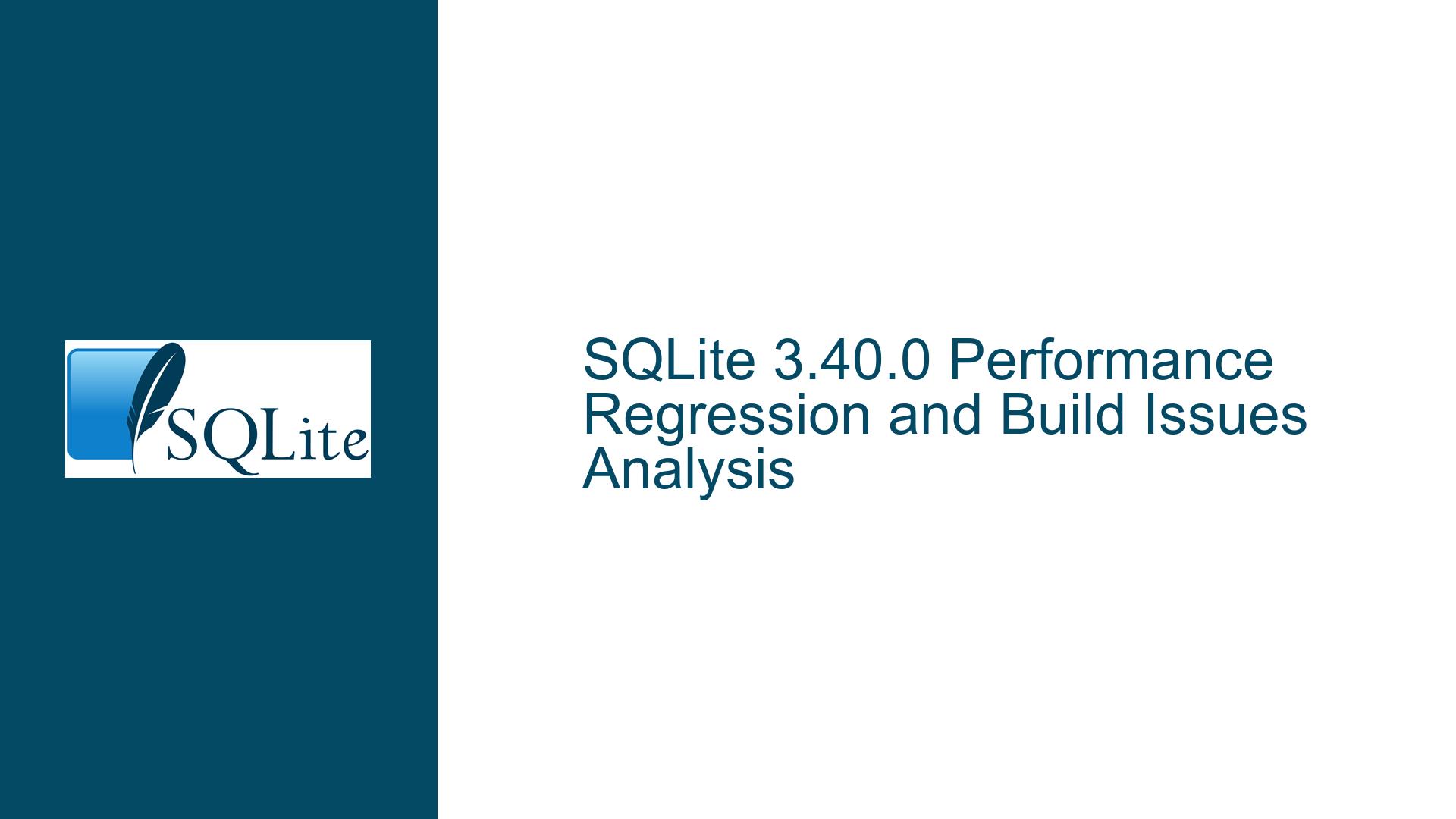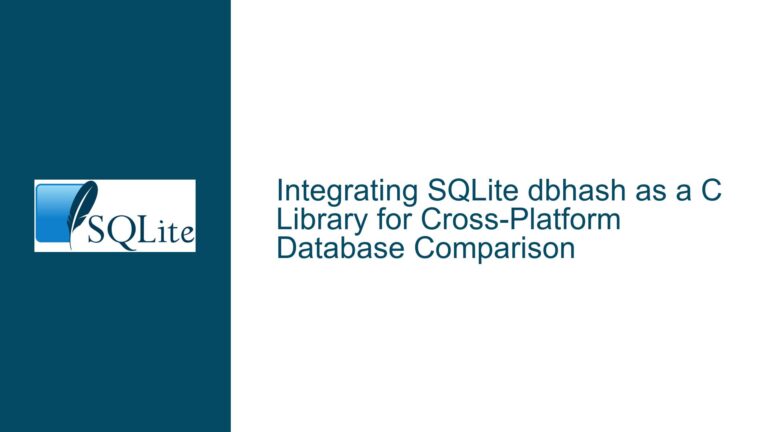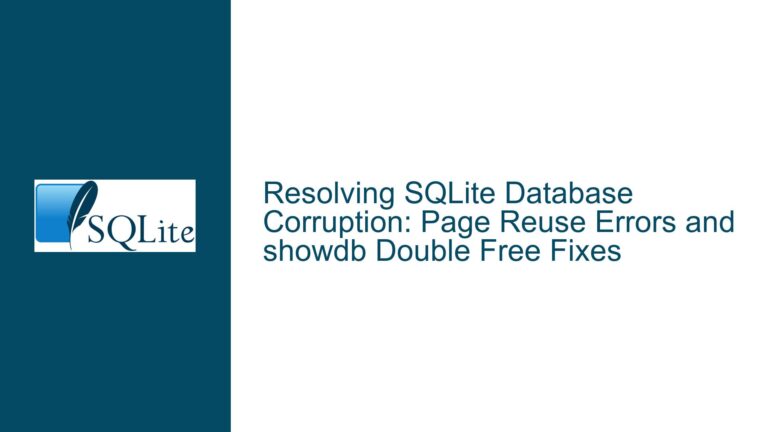SQLite 3.40.0 Performance Regression and Build Issues Analysis
Performance Regression in SQLite 3.40.0 Compared to 3.39.4
The core issue revolves around a noticeable performance regression observed when running a specific query on SQLite version 3.40.0 compared to version 3.39.4. The query in question retrieves 119 records from a database, and the execution time nearly doubles in the newer version. This regression is particularly concerning because the query is critical to the functionality of the tool being used, and the increased latency could impact user experience significantly.
The query involves a LEFT JOIN between two tables, Project_List and Project_Extras, with additional subqueries to filter records based on the maximum InsertDate for each ProjID. The query also includes a condition to filter records based on the BudgetYear matching the WorkingYear from a SYSTEM_Variables table. The schema for these tables is complex, with a large number of columns and multiple indexes, which could contribute to the performance characteristics observed.
The schema for the Project_List table includes a composite primary key and numerous indexes, which are intended to optimize query performance. However, the presence of so many indexes could also lead to increased overhead during query execution, especially if the query planner in SQLite 3.40.0 is not utilizing them as efficiently as in previous versions. The Project_Extras table has a simpler schema but also includes indexes that could impact performance.
Possible Causes of the Performance Regression
Several factors could contribute to the observed performance regression in SQLite 3.40.0. One possibility is that changes in the query planner or optimizer in the new version are leading to less efficient execution plans for this particular query. The query planner in SQLite is responsible for determining the most efficient way to execute a query, and even small changes in its logic can have significant impacts on performance.
Another potential cause is differences in the build configuration between the two versions. The user mentioned that the older version was downloaded directly from the SQLite site, while the newer version was built with default values. This could mean that certain optimizations or compile-time options that were present in the pre-built version are not enabled in the custom build. For example, the presence or absence of specific compiler flags, such as those enabling or disabling certain SQLite features, could impact performance.
Additionally, the schema design itself could be a contributing factor. The Project_List table has a large number of columns and a composite primary key, which could lead to increased overhead during query execution. The presence of multiple indexes on this table could also impact performance, especially if the query planner is not utilizing them effectively. The Project_Extras table, while simpler, also has indexes that could contribute to the observed performance characteristics.
Troubleshooting Steps, Solutions, and Fixes
To address the performance regression, several steps can be taken. First, it is essential to ensure that the build configuration for SQLite 3.40.0 matches that of the pre-built version as closely as possible. This includes using the same compiler flags and enabling or disabling the same features. The user has requested the command used to build the 32-bit Windows DLL provided on the SQLite download page, which could help in replicating the build environment.
Next, it is important to analyze the query execution plan for both versions of SQLite to identify any differences in how the query is being executed. The EXPLAIN QUERY PLAN statement in SQLite can be used to obtain detailed information about how the query planner is executing the query. By comparing the execution plans between the two versions, it may be possible to identify specific changes in the query planner that are leading to the performance regression.
If differences in the execution plan are identified, it may be necessary to adjust the query or the schema to improve performance. For example, adding or modifying indexes, or restructuring the query to make it more efficient, could help mitigate the performance regression. Additionally, it may be worth considering whether the schema design itself could be optimized to reduce overhead during query execution.
Finally, if the performance regression cannot be resolved through these steps, it may be necessary to reach out to the SQLite development team for further assistance. Providing detailed information about the schema, the query, and the observed performance characteristics will be essential in helping the team diagnose and address the issue. The user has already provided the schema for the relevant tables, which is a good start, but additional information, such as sample data and the exact build configuration used, may also be necessary.
In conclusion, the performance regression observed in SQLite 3.40.0 compared to 3.39.4 is likely due to a combination of factors, including changes in the query planner, differences in build configuration, and the complexity of the schema. By carefully analyzing the query execution plan, ensuring consistent build configurations, and optimizing the schema and query, it should be possible to mitigate the performance regression and restore the query’s performance to its previous levels.






